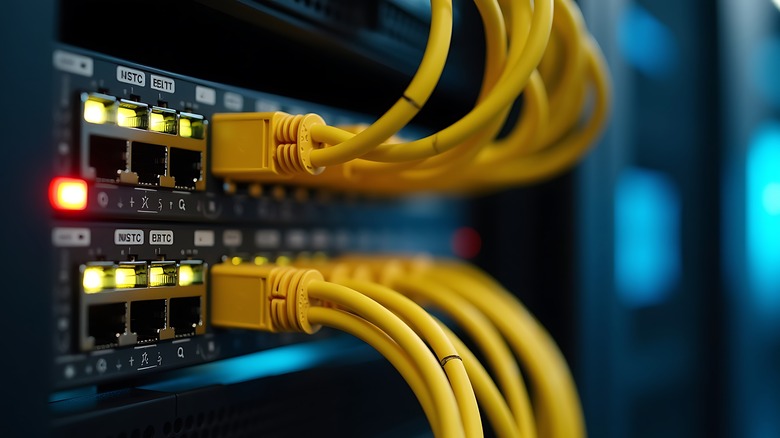What Is Ultra Ethernet, And Who Is It For?
The way we move data around massive computer systems is changing really fast. Ultra Ethernet, or U-Ethernet, is the newest contender in high-speed networking, and it is built from the ground up to handle the explosive demands of artificial intelligence and high-performance computing (HPC). Putting it simply, you can consider it as Ethernet, but with a serious upgrade — stronger, smarter, and more prepared for what the future needs. That said, it's not aimed at everyday users. Ultra Ethernet is designed for enterprise-level environments like data centers, financial networks, and AI infrastructure, not home setups.
It's backed by the Ultra Ethernet Consortium (UEC), a group of over 100 tech companies, including AMD, Intel, and Meta, which just launched Specification 1.0 and laid down the technical blueprint. Ultra Ethernet is built to reduce latency and ensure reliable performance, especially across massive GPU-scale networks with over a million endpoints. In fact, Oracle Cloud Infrastructure is already set to deploy hardware that follows these new rules. Plus, leading the hardware race is AMD's Pensando Pollara 400GbE NIC, built specifically for this next-gen standard.
Built for AI and tuned for performance
Ultra Ethernet completely reworks traditional Ethernet instead of just improving it. Where the traditional Ethernet protocols struggle under the weight of zettascale AI clusters(ultra-large systems that use hundreds of thousands of GPUs to train advanced models), U-Ethernet is tailor-made for them. AMD's new Network Interface Cards (NICs) are ready for workloads involving over 131,000 GPUs, similar to what Oracle is planning for its AI infrastructure. These cards use custom processors to intelligently manage data, monitor congestion in real-time, and reroute traffic to avoid network slowdowns. That translates into faster, cleaner data movement — exactly what large AI models need.
Besides impressive speed, U-Ethernet uses tools like load balancing (which spreads traffic across paths), path-aware congestion control (which reroutes around traffic jams), and selective retransmission (which only resends dropped data instead of entire streams). These features give Ultra Ethernet an edge over its rivals. Even when a connection fails, the built-in failover system keeps everything running smoothly. This is the kind of speed and stability that training complex AI models or managing real-time robotics absolutely demands.
Who is Ultra Ethernet really for?
Ultra Ethernet is built for massive operations. So, if your infrastructure includes hyperscale data centers, AI training at scale, smart cities, or automated factories, you can rely on it. It offers low latency, high bandwidth, and the kind of performance that older protocols struggle to maintain at scale. And while it works with current APIs (the interfaces developers use to build applications), switching to Ultra Ethernet still requires a serious investment in new hardware, like compatible NICs and switches.
To make the transition smoother, Ultra Ethernet also supports older systems, reducing the need for teams to relearn everything from scratch. Plus, it introduces new features like Link Layer Retry, which resends only the missing data instead of starting over, and supports networks with over a million endpoints, meaning it can handle huge numbers of devices at once. But it's not without challenges. Upgrading existing infrastructure can be expensive, and compatibility across different hardware and software setups is still being worked out. So, while Ultra Ethernet is promising, it's mainly for organizations already operating at massive scale or planning to grow quickly.


